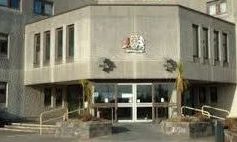The Outer Hebrides are facing a new clearances caused by depopulation.
The Western Isles Council is to hold a seminar to examine ways of halting the loss of people in the islands.
The population of the Outer Hebrides is 27,070, according to the most up-to-date figure which was released in June last year.
The number of people is 180 fewer than there were in 2014.
The council said the framework for a policy to tackle population decline would be developed at the seminar.
Islands minister Humza Yousaf will be invited to attend the event in autumn, the local authority added.
Councillor leader Angus Campbell said: “Attracting people to our islands is something we have worked on for many years and positive net migration is an essential part of counteracting the negative natural change that the Outer Hebrides continues to experience.
“These islands offer a good quality of life, but we also need to provide the infrastructure for people to fulfil their aspirations and for that we need good and affordable housing, good services and most importantly a multi-agency approach.”
Depopulation has been a long running issue for the Western Isles.
Nine years ago, research commissioned by the council suggested that more women than men were leaving the islands.
The Hebrides Migration Study also found that fewer women were moving to the islands.
The study said there had been long-term decline between 1901 and 2001, which was steepest in Harris, the Uists and Barra.
But it also gave a forecast that there would be more people by 2019 – but fewer schoolchildren, people of working age and women of child-bearing age.
Since 1951, the population of the whole of Harris has halved to just under 1,900. Before the First World War the total population of the Western Isles was nearly 45,000.
The Hebrides has the largest islands population, but census figures show it declined from 30,711 in 1981 to 29,600 in 1991.
Many islands that once supported people are no longer populated.
